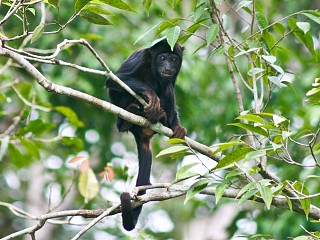Founded as a military outpost and colony in 1778, it became strategically important with the opening of the Paraguay River to international trade after the War of the Triple Alliance (1865-70). Nearby are the buttes of Morro de Urucum, which contain vast mineral deposits.
Corumbá is a city known as the White City, because of the light color of its ground. It has 60% of the Pantanal of Mato Grosso do Sul and 37% of the Brazilian Pantanal, then, considered the capital of Pantanal and the main city along the Paraguay river. The economy is mainly based on livestock-farming – it has the largest livestock population of Mato Grosso do Sul, mining, fishing and tourism. The city preserves its public buildings of European influence, as well as its history, costumes and traditions. It has as tourist sites: Cesario do Porto; Forte Coimbra (1776); Forte Junqueira (1871); Igreja Nossa Senhora da Candelária (1872); Urucum hill (the world’s 3rd largest ore reservation of iron and the 2nd one of manganese); photograph safari; Parque road, which crosses along Pantanal and head to Porto da Manda; Casa do Massa Barro; Casa do Artesão; Praça da Independência; boat rides and so go on!
Furthermore, because it’s located next to the border, you can easily go to other neighbor cities in Paraguay such as Puerto Suarez and Puerto Quijarro, important shopping centers of imported goods as well as craftworks from all over South America.
Facts about Corumbá
- Before Campo Grande was the economic center of the old Mato Grosso (before creating Mato Grosso do Sul), the economic hub of the region was Corumbá . This period began in 1873, after the war with Paraguay (or the Triple Alliance) and lasted until the 1930s.
- In the early twentieth century the city had more foreigners than Brazilians.
- The municipality of Corumbá is the largest state municipality, occupying nearly 20 % of the whole territory of Mato Grosso do Sul.
- Has the lower lands of the Midwest, the Pantanal, with just over 100 meters above sea level, and the highlands of the Midwest, the Mountain of Annatto, where altitudes exceed the 2000 meters . This all within a few miles of Corumbá.
- Early last century, the Sierra Annatto was visited by people from different regions, including other countries, seeking cures for ailments such as tuberculosis, due to the clean air and mountain climate beyond the natural waterfalls and pools of mineral water.
- It has the highest proportion of cattle per capita in the world, with an estimated 4.5 million cattle compared to 100,000 inhabitants.
- Historically, Corumbá has been much more important than today. Possessed the third largest port in Latin America and has been the main and most important trading center of the Midwest.
- Corumbá is considered the embryo of Mercosur, since it was the first city in the region to maintain trade relations with neighboring countries, especially Argentina and Paraguay.






